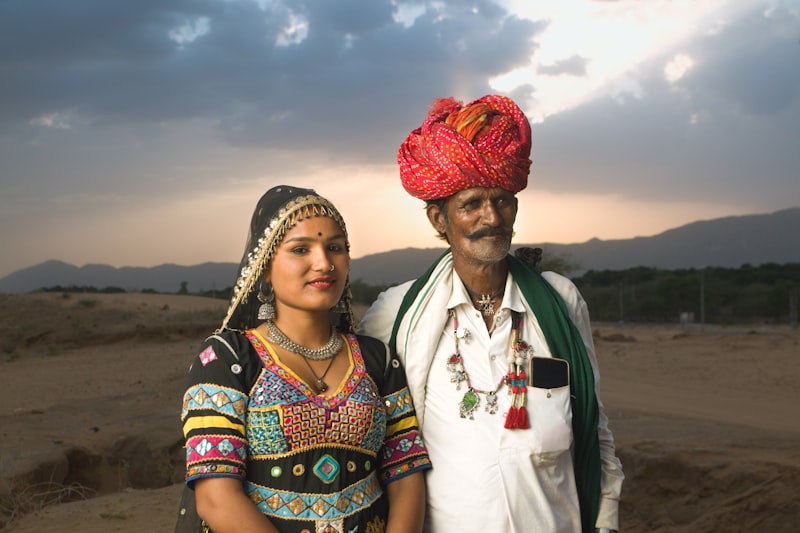Cultural Influences on Destination Wedding Attire
Cultural Influences on Destination Wedding Attire
Destination weddings have become a sought-after trend, attracting couples looking to combine their nuptials with an exotic holiday experience. One of the most significant aspects of a destination wedding is attire, which is heavily influenced by cultural elements. In this article, we will explore how different cultures influence the attire of destination weddings, ensuring that couples can celebrate their love in a way that honors their backgrounds and their chosen location.
The Importance of Attire in Weddings
Wedding attire is not just about style; it symbolizes tradition, beliefs, and personal identity. In destination weddings, the fusion of local customs and personal styles often results in breathtaking outfits that are unique and memorable. Couples, as well as their families, might want to wear traditional attire that reflects their heritage, or they might choose to adapt these styles to fit the local environment.
Cultural Influences on Wedding Attire
Different countries have distinct traditions that influence how weddings are celebrated, including the attire worn by the couple. Below, we examine a few cultures and their impacts on destination wedding attire.
| Country | Traditional Attire | Modern Adaptations |
| India | Sarees and Sherwanis | Fusion outfits inspired by resort wear |
| Mexico | Traditional Huipil or Charro suit | Incorporating local fabrics and floral designs |
| Japan | Kimono and Hakama | Lightweight versions for tropical climates |
| Italy | Classical Gothic and Renaissance styles | Chic, minimalist modern designs |
1. Indian Influence
Indian weddings are vibrant, colorful, and rich in tradition. Elements such as intricate embroidery, embellishments, and the use of gold and silk fabrics play a significant role. For destination weddings, many couples opt for lighter materials and elegant styles that still embody traditional Indian elements. The bride might wear a lehenga or saree in bright hues, while the groom can choose a sherwani complemented by a kurta, which is more comfortable in warm climates. Additionally, it is becoming increasingly popular for couples to personalize their attire by incorporating local motifs.

2. Mexican Influence
In Mexico, weddings are joyful celebrations filled with music, food, and color. Traditional attire such as the huipil (a hand-embroidered tunic) for women and the charro suit for men reflects this heritage. In a destination wedding context, couples may blend these traditional garments with modern Western styles, opting for beautiful floral themes or colorful fabric that brings a piece of Mexico’s spirit into their attire. Accessories such as handcrafted jewelry and colorful sashes further enhance the overall look, making the event unforgettable.
3. Japanese Influence
Japanese wedding attire typically includes a kimono for the bride and a hakama for the groom. These garments are often made from exquisite silk and adorned with intricate patterns and designs. In warmer climates, couples might adjust the thickness of the fabric, opting for lighter, more breathable materials while maintaining the elegance of the traditional styles. Furthermore, many couples choose to incorporate elements of nature, such as cherry blossoms, into their attire, symbolizing beauty and transience.
4. Italian Influence
Italian weddings reflect both history and modernity, with influences from various regions in Italy. Traditionally, brides might wear elaborate gowns inspired by Gothic and Renaissance art. In destination weddings, many couples go for simpler, yet sophisticated Italian styles that echo the elegance of the region combined with contemporary fashion. Light fabrics, delicate lacework, and chic lines are common features. Accessories, such as traditional veils or floral crowns, add a unique touch that connects the couple to their chosen locale.
Fusion of Cultures in Destination Weddings
With the rise of multicultural families and the exchange of traditions, fusion weddings are increasingly common. Couples often draw from their diverse backgrounds to create hybrid attire that reflects both partners’ heritages. This not only honors their roots but also creates a stunning visual that tells their unique love story. For example, a bride might wear an Indian lehenga with an Italian lace overlay, while the groom may choose a Japanese hakama in traditional colors complemented by Mexican artisan accessories.
Practical Considerations for Destination Wedding Attire
While cultural influences can inspire beautiful wedding attire, couples planning destination weddings must also consider practical aspects such as climate, travel, and comfort. Here are some tips:
- Fabric Choice: Choose lightweight fabrics that are breathable and suitable for the local climate.
- Comfort: Consider the activities involved in the wedding festivities, ensuring that attire is comfortable for long horas (traditional wedding celebrations) or outdoor ceremonies.
- Travel-Friendly: Ensure that outfits can be easily packed and won’t wrinkle excessively. Consider wearing the outfits while traveling or using garment bags designed for formal attire.
- Local Customization: Utilize local artisans for alterations or additional embellishments that can incorporate regional elements into the attire.
Conclusion
Destination weddings present a wonderful opportunity for couples to explore different cultural influences on their wedding attire. By choosing outfits that reflect their heritage, incorporate local elements, and adapt to the venue's atmosphere, couples can create a stunning visual narrative of their love story. It’s essential to remember the practical aspects while staying true to one’s cultural background. In doing so, couples not only celebrate their unique identities but also make their wedding day a beautiful fusion of love, culture, and location.
In summary, understanding cultural influences on destination wedding attire allows couples to craft a memorable experience that honors their origins while enjoying the beauty and excitement of their wedding day. Whether you prefer the intricate designs of Indian jewelry or the simplicity of Italian chic, marrying tradition with personal style can create a stunning and heartfelt celebration of love.
